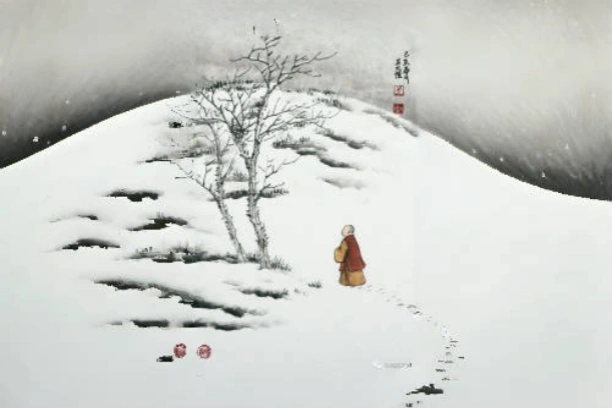
The door of Ch’an is entered by Wu. When we meditate on Wu we ask “What is Wu?” On entering Wu, we experience emptiness; we are not aware of existence, either ours or the world’s.
E-MAIL: admin@relaxmid.com

Emptiness and existence are coextensive; there is no barrier between the two. Yet practitioners have difficulty finding their way from existence to emptiness. They can’t go from phenomena back to the basis of their being: emptiness. In meditation, we go from phenomena to emptiness by progressively voiding our mental states.
When you came to this retreat, I told you to bundle up all your everyday thoughts and habits ─ everything connected to your life ─ and leave them outside. This is the first kind of voiding ─ leaving behind your preoccupations. Now I will talk about a deeper level of voiding. On the first day I said that we have a very noisy environment for practice ─ cars, radios, kids, and so on ─ and I asked if the noises outside would bother you. Most people said “No.” Later, one student said that the outside sounds didn’t bother her, only my words did. She couldn’t stop thinking about them. If I told everyone to relax, she would just sit there saying to herself: “Relax, relax, relax.” If I told everyone to be like a corpse, she would think, “I am dead, I am dead.” She said, “I can put down everything except Shih-fu’s words.” I told her she had to learn to put that down too. Similarly, I told you to bow to your cushion before you sit and vow to sit well. But after you sit, forget it. Another student, while sitting, kept wishing to meditate well. Well, as long as he was wishing, he was not meditating, much less meditating well. So the second level is to void out thoughts that come up in the course of the retreat.
To progress to a further stage of voiding, you must next forget the meditation method itself. It’s like putting on a pair of glasses. The normal thing is just to forget you are wearing them and just see through them. If you’re always conscious of the glasses, that will be troublesome to you. Another example would be an athlete who spends years training. But when he plays in actual competition; he has to forget his techniques and just play. To make real progress in meditation, at some point you have to forget the method and just meditate. Nearly everyone here has the problem of not being able to forget the method. This can be a real burden.
When you are just using the method and not thinking about it, you have voided one big mental factor. Now go one step further and forget yourself too. It’s like a man so engrossed in watching a pretty girl walk down the street, that he forgets himself and steps right into a puddle. When you forget yourself, you have no standpoint, no sense of body. If you were to forget the method but not yourself. your body would feel very comfortable. But when you forget yourself, feelings of comfort or discomfort don’t matter yet, everything around you continues to exist with clarity.
Finally you must forget even the environment. Though your ears are not stopped, you hear nothing; though your eyes are open, you see nothing. You have no sense of time. Having voided your outside problems, your present thoughts, your method, your self your surroundings, you have entered samadhi.
Most of you can void to some of these levels, but can’t forget the method, not to mention yourself or the environment. These are major obstacles for most people. If you can at least forget the method, you lose awareness of time and sit very well. If you can forget yourself, you may experience a personality change. If you can then forget the environment and enter samadhi, you will definitely undergo a big change. You will have moved a long way from phenomena to emptiness. At that time I will give you a method to go beyond that, to the stage of “no self.”
To sum up the five levels: first, empty your mind of thoughts of your daily life. Second, put down thoughts coming up during the retreat. Third, void the method itself. Fourth, forget yourself. Fifth, forget the environment. Ask yourself what level you have been able to reach so far.
When I meditate, I go through the same five steps. One by one, I forget the previous level until I reach the fifth level. In the past I would go through this process very slowly. Now I pass very quickly and smoothly through each level. With practice you will be able to do the same. It is written in the Sutras that Sakyamuni Buddha would enter into what is called the “levels of dhyana” when he meditated. He would enter the first level of dhyana before going to the second, the third, and so on. The analogy is not exact though. What I am talking about here are the levels from the ordinary state of mind to samadhi. This would be equivalent only to the first level of the Buddha’s dhyana. Of course you’re not meditating on the level of the Buddha, but the process is the same.
So with these instructions, you can be very clear about how to practice. When you are working hard, you can see your own practice very clearly. As you move from one level to another you know clearly what the next level is. Like the rungs of a ladder the steps are well marked out. With continued practice you’ll eventually ascend very quickly.
PREVIOUS: NON-OPPOSITION | Getting The Buddha Mind
NEXT: THE FOUR GREAT BARRIERS | Getting The Buddha Mind
